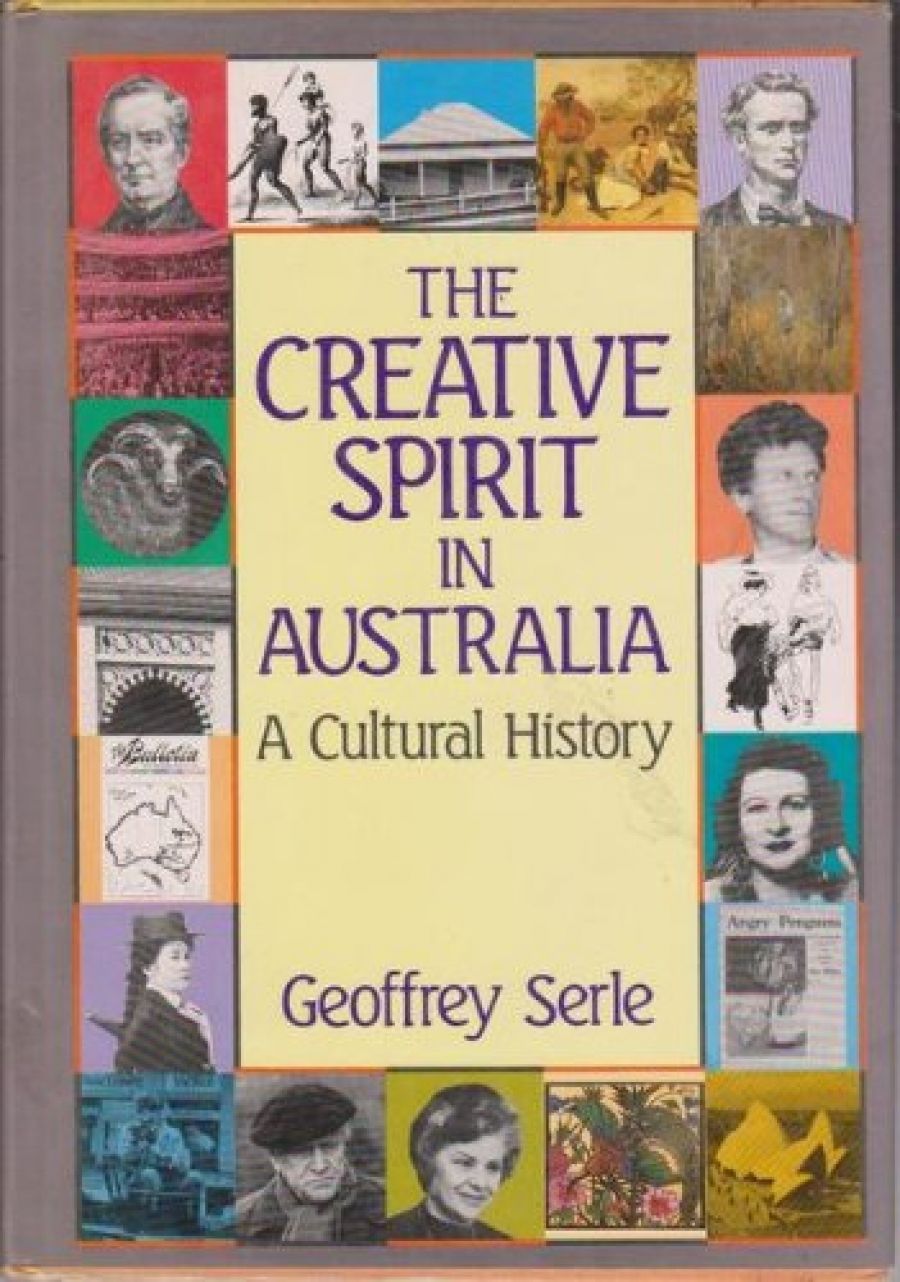
- Free Article: No
- Review Article: Yes
- Online Only: No
- Custom Highlight Text:
The perennial and increasingly tiresome question of Australian ‘national identity’ will probably diminish rapidly after the point where the design of a new and truly Australian flag is determined.
That it is a question at all, after just on two hundred years of settlement here, is curious. Part of the condition was diagnosed by the late Arthur Phillips in his studies of our colonial culture, The Australian Tradition, where he perceived in this country what he termed ‘the cultural cringe’. Phillips’ book, together with Vance Palmer’s The Legend of the Nineties and Russel Ward’s The Australian Legend, were emancipating surely.
- Book 1 Title: The Creative Spirit in Australia
- Book 1 Subtitle: A Cultural History
- Book 1 Biblio: Heinemann Australia, 247pp, $39.95
But these were happenings years back in the l950s. Then in 1973 the historian Geoffrey Serle, taking a God’s eye view of the national achievement, published his short history of literature, art, music, theatre, architecture, science and learning in Australia. Magnificently titled from a line in a poem by A.D. Hope, From Deserts the Prophets Come won the 1974 National Book Council Award for Australian Literature. And now, using the sub-title of the original edition as the main title, a new, revised, updated, and illustrated edition for a new and wider audience is offered in a large format as The Creative Spirit in Australia.
As Geoffrey Serle points out, intellect and the arts, until recent times, have been almost the last things a European has associated with Australia. For instance, until the period of World War I and after, ‘Australian writing of high quality had been rare, and serious writers were isolated from each other, lacked an audience, and hardly ever received informed criticism.’ And the same applied to all other forms of Australian creativity with the exception of ‘freaks like Nellie Melba’.
Rosa Praed near the end of her life lamented ‘Alas! When I think that in those early days of mine, it never struck me that my worthiest ambition might be to become a genuine Australian storyteller! Then it was rather the fashion to despise native surroundings and the romance of the bush. We all wanted to be English …’ In particular, Serle observes, Australia needed to grow in scale and diversity – from diversity comes disagreement, stimulus and excitement. And Australia also needed to move towards nationhood, in order to find the interpretive artists who would begin to state in aesthetic terms what it might mean to be an Australian.
There were stirrings. The ‘Heidelberg’ artists were to establish an Australian school of painting during the late l880s. With this and the founding of the Bulletin by J.F. Archibald and his two partners in 1880 and their subsequent policy of encouraging writers, poets and artists, the next twenty years up until eventual Federation came to be recognized as the genesis of our national culture.
Serle observes that it took almost a century for any real nationalist movement to emerge. Writers and easel painters employed the European styles and subject-matter they knew, and saw their surroundings with a European vision, when early landscape painters depicted the sunlit landscape, the eucalypts, wattles and ferns in a manner and style that was English in character, sentiment and palette. But even with the ‘Heidelberg’ impressionists and the remarkable influence of the Bulletin on the arts, Serle finds ‘the disappointing delay in the development of both literature and painting in the first quarter or third of the twentieth century is closely related both to the delayed development of Australian independence, because of the swing back to Empire for ideological and geographical reasons, and to the continuation of extraordinary cultural isolation.’
All that has changed.
Geoffrey Serle’s final chapter, superbly constructed like the others, records the enormous achievements and events within the creative arts and learning over the last fifty years. No longer can we, or anybody, regard Australia as a cultural ‘desert.
Although Serie has demonstrated we have at last acquired national maturity, if the question of ‘identity’ is troubling some among us, they should be urged to read his book.


Comments powered by CComment